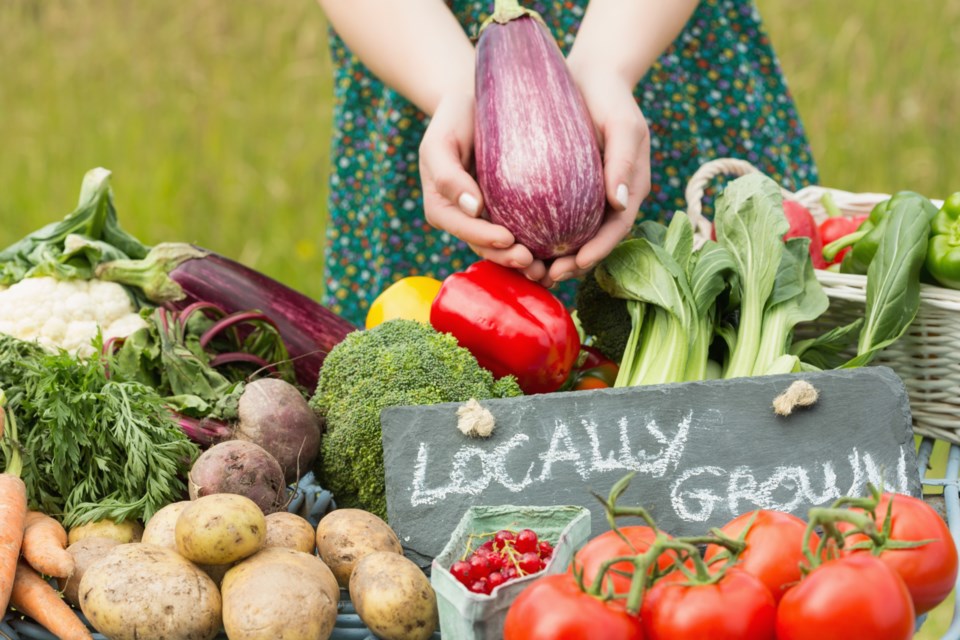When someone first hears that I am a holistic nutritionist, a lot of comments follow. Things like, “Yeah, I eat healthy...ate three salads this week!”, or “So, do you, like, eat nothing but organic and raw food?” Or my favorite; “Organic foods are bullshit, it's a total scam.” To which I politely smile while sipping on my glass of organic Pinot Noir.
Whether you want to eat organic foods is totally up to you, because free will and all. But before you make up your mind and blow off organics as some sort of “green-washing” trend, you need to understand that there is a big difference between organic and conventionally-grown foods. These are two completely different ways of growing and producing foods and there are a lot of factors to be considered.
Now we live in a world full of companies trying to make a buck claiming to be healthier than they actually are, putting words on their product like “natural” or something else written in bold and green with a picture of a mountain of flower to signify it’s “purity”. But a closer look at what the product is actually made of shows otherwise (label reading is a whole different topic in itself, my point is, I get it).
You are being misled and lied to every turn you take, so the skepticism of something labelled “organic” is totally valid.
To give you a more clear picture of the differences between the two ways of producing food I am answering some of the FAQs that are usually drunkenly trown my way, 'cause everyone is an expert at everything after a few shots.
Is there actually a difference between organic and conventionally-grown foods?
Conventional foods are sprayed with chemicals to enhance that growth process. Organic foods are helped along by the use of natural fertilizers, like compost. Another major difference is the use of pesticides on conventionally-grown foods to prevent various types of animals and insects that feed on plants and the potential bacteria that they can bring. Organic farming practices rely on the use of traps, companion planting and other methods to achieve the same results without the residue of pesticides being left in the plant or getting into the water.
Vitamins and minerals have dramatically declined in our soil due to industrialized farming practices. Traditional farming systems were based on mixed farming that grew several plants in rotation, in order to replenish the soil and help biodiversity. For example, corn depletes the soil of nitrogen. Therefore, in the season following a corn harvest, it would be important to plant beans or peas to replenish the nitrogen deficiency in the soil. These specific plants concentrate nitrogen in their roots, thereby making it available in the soil once again. Now, contrast this with conventional industrial agriculture where the same corn is grown in the same fields year after year. Essentially, the soil is depleted of nitrogen and farmers are forced to replace the loss artificially with chemical fertilizers. The toxins then run into our lakes and rivers and cause all sorts of environmental havoc. Not to mention the pollution caused by machines used to cater to this type of farming.
Why is organic food more expensive?
This is a question often asked by the person sporting a $200 haircut that has no problem spending $5 daily for their iced-chai-whatever, but when it comes a carton of eggs that are local, sustainable and organic for $6, they draw the line? Priorities folks, Priorities!
Organic products tend to be more expensive for a few reasons; no chemicals equals more labour (people need go get paid), higher cost of natural fertilizers, organic certification costs, post-harvest handling, mandatory segregation of organic and conventional produce (especially for processing and transportation), and the list goes on. Now having said that, you don’t need to buy all foods organic. The Environmental Working Group’s Shopper’s Guide to Pesticides has a “Clean 15″ list of the 15 types of produce lowest in pesticides. Save your money for the other organic produce and buy the conventional versions of these.
• Join Patty Javier Gomez, R.H.N. for an Intro to Fermentation-Sauerkraut workshop at Unity Yoga Teahouse (1672 East 10th) on Feb. 8. Learn about the health benefits of probiotics and fermented foods, a tradition that goes back thousands of years. For more information, visit Whole-Nourishment.com
RECIPE: Organic coconut banana smoothie
1 cup coconut milk
1 organic avocado
1 tbsp hemp hearts
1 tbsp chia seeds
1 cup coconut water (you can use regular water if you don’t have any coconut)
3 organic bananas
Mix in blender and serve! Great start to any day!



